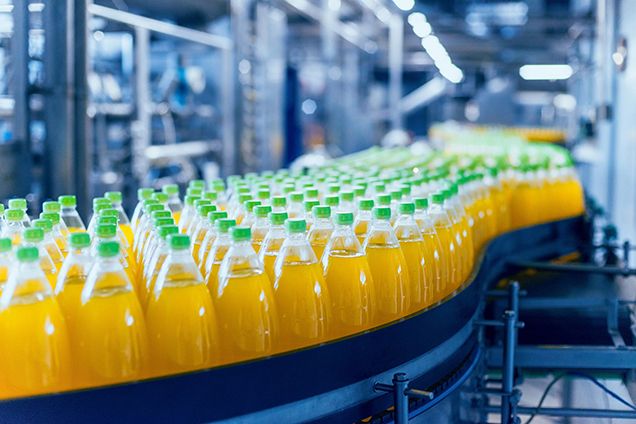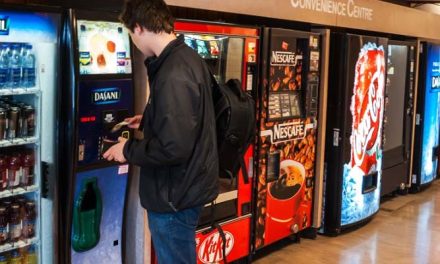
2020: Another Dynamic Year for Canada’s Beverage Industry

2020: Another Dynamic Year for Canada’s Beverage Industry
By Jim Goetz
THE LIFE BLOOD OF THE BEVERAGE INDUSTRY IS INNOVATION; THE MANY MEMBERS THAT MAKE UP THE CANADIAN BEVERAGE ASSOCIATION ARE CONSTANTLY WORKING TO ADAPT TO GLOBAL SHIFTS ON SUSTAINABILITY, MORE NO AND LOW-CALORIE BEVERAGE OPTIONS AND EDUCATING CONSUMERS ABOUT THE BEVERAGES THEY ENJOY.
Importantly, association members are leading on those fronts right here at home in Canada. The beverage industry, as many Canadians are coming to understand, is not just traditional pop, it comprises a wide variety of beverages, such as 100 per cent fruit juices, sports drinks, bottled waters, energy drinks, iced teas, etc. The vast majority of those products are produced here in more than 200 refreshment beverage facilities, all of which directly employ more than 20,000 Canadians.
At the core of the refreshment beverage industry value chain is the manufacturing sector. It provides a significant boost to the economy, 88¢ for every dollar of production is retained in the economy and as a whole, the refreshment beverage industry’s operations generated in 2013 $6.7 B in value added to the economy (in terms of GDP), including $3.3 B in labour income.
Innovation is the driving force for our members, and more beverage companies are introducing low and no-calorie options into the market. In the last year alone more than 70 products have been introduced to the Canadian market, including new recipes and smaller portion sizes.
The Balance Calories Initiative launched in 2015 and has worked to reduce calories by supporting greater options in order for consumers to balance their lifestyle with the beverages they enjoy, while reducing the sugar they consume from beverages. Balanced Calories aims to reduce calories consumed from sugar-sweetened beverages per capita/per day by 20 per cent by 2025. This is a meaningful initiative that will have significant real-world impact in helping people reduce their consumption of calories and sugar from beverages.
Since the launch of the initiative, according to data from StatsCan’s own Canadian Community Health Survey, there was a 10.2 per cent decrease in calories from non-alcoholic sugar-sweetened beverages. Meaning that since 2004, there has been a reduction of more than 44 per cent in the calories consumed by Canadians from our members’ beverages. The reduction is significant, representing millions of calories from sugar being removed from Canadians’ diets.
The hard work of the industry does not stop there. The beverage industry is working to drive innovation not only affecting what is inside the bottle, but the bottle itself. Packaging has played an important role in making sure its materials are constantly improving in a more sustainable direction.
The beverage industry is on track to using industry leading levels of recycled content in packaging. Including commitments to use between 25-50 per cent recycled materials, as well as recycling one container for each sold. Our members are also committed to improving packaging technology in order to reduce waste and improve the consumer experience. We strive to monitor calorie consumption through variable packaging sizes by developing innovative forms of recycled material-based packaging.
Bottled water is packaged using PET plastic, or polyethylene terephthalate – one of the most environmentally friendly, low-carbon-footprint packaging materials available. When recycled, recovered PET is used to make playground equipment, automobile parts, carpeting, fleece clothing, sleeping bags, shoes, luggage, and other plastic containers. Recovered PET bottles – which are recovered at an average rate of approximately 75 per cent in Canada – can also be recycled to produce new PET bottles in an energy efficient manner. On average, it takes 70 per cent less energy to produce a bottle from recycled PET plastic than from raw material.
When consumers choose to hydrate, modern product choices are nearly endless. Beverage manufacturers are responding to consumers’ evolving preferences, as consumption of sugars from beverages has decreased by 20 per cent per capita since 2004. The modern beverage market in Canada has nearly 50 per cent of products with reduced calories, and bottled water is an important part of this mix. New varieties of bottled water are rapidly coming to market. Whether its regular, sparkling, flavoured, or vitamin-enhanced, there is a bottled water option to meet every consumer’s taste profile.
The Canadian Beverage Association and its members believe that all stakeholders, including industry, government, and not-for-profit health organizations, play a role in developing workable solutions to serious health issues. Solutions put forward must reflect the diet and lifestyle of Canadians, and research from a wide range of sources.
Jim Goetz is the president of the Canadian Beverages Association, the national trade association representing the broad spectrum of companies that manufacture and distribute the majority of non-alcoholic refreshment beverages consumed in Canada.


































